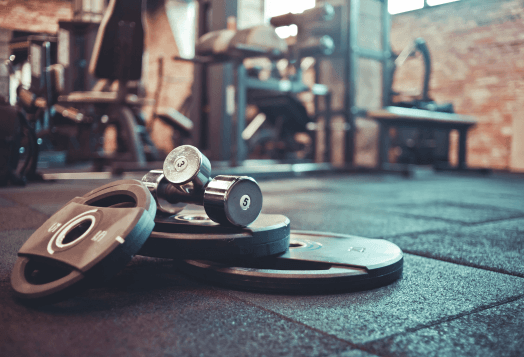
Do you think bench presses are the only way to build chest strength? Think again. Floor presses, whether with dumbbells or a barbell, offer a shoulder-friendly, lockout-focused alternative that targets your pectorals, triceps, and anterior deltoids. Whether you’re training at home or in the gym, mastering this pressing variation can skyrocket your upper body gains.
Why Floor Presses Are a Shoulder-Friendly Power Move
If your shoulders often protest during bench presses, the floor bench press might just be your new BFF. Unlike a traditional bench press, your elbows stop at the floor, reducing strain on the anterior deltoids while still firing up the pectoralis major and triceps brachii. This makes it a perfect shoulder-friendly press that’s safer for those recovering from injuries, or anyone who hates that nagging shoulder pain.
Floor Press Variations
Dumbbell Floor Press

The dumbbell version is the easiest way to start, especially if you’re training at home. Each arm works independently, helping you fix muscle imbalances while engaging stabilisers like your core and rhomboids. Because dumbbells move more freely than a barbell, the exercise feels natural and joint-friendly, perfect for beginners or anyone looking to improve chest and triceps hypertrophy.
Barbell Floor Press

With a barbell, you can lift heavier loads and focus on building pressing strength. This variation is especially popular with powerlifters because it strengthens the lockout phase, the toughest part of a bench press, where you extend your arms fully.
Floor Bench Press with Chains/Bands

This variation might sound intimidating, but it’s just a floor press with some extra resistance added. Chains or bands make the movement heavier at the top and lighter at the bottom. That means when your arms are nearly locked out, you’re working harder, which builds stronger triceps and helps you push through “sticking points.” Beginners can try this with light bands first; it’s a safe way to build power without needing super-heavy weights.
Kettlebell Floor Press

If you’ve ever tried holding a kettlebell, you know it feels less stable than a dumbbell. That’s the point! The uneven weight distribution forces your chest, shoulders, and triceps to work harder to keep control, while your core stays tight for stability. It’s a great way to add variety once you’re comfortable with dumbbells or barbells, and it teaches your body better balance and coordination.
Other Alternatives (Board/Pin Press, Spoto Press, etc.)
For those ready to experiment further, there are a few specialised alternatives. The Board or Pin Press shortens the range of motion, letting you practise lifting heavier weights safely. The Spoto Press adds a pause just above the chest, teaching you control and tension. While these are more advanced, knowing they exist can give beginners something to work towards as they progress in their strength training journey.
Lockout Strength and Upper Body Gains Explained
The floor press shines in lockout strength, the most challenging part of any pressing movement. By practising this top-range motion, you strengthen triceps and improve your overall bench press performance. Plus, you’re giving your shoulders a break while still targeting your anterior deltoid.
Common Floor Press Mistakes
Arching/Loss of Tension
One of the most significant errors beginners make is trying to “arch” like in a bench press. On the floor, this reduces stability and puts your lower back at risk of injury. Keep your back flat against the ground, brace your core, and maintain tension throughout the set to ensure safety and optimal strength.
Bouncing Arms
It can be tempting to let your elbows or the weights “bounce” off the floor for momentum, but this reduces muscle activation and stresses your joints. Instead, lower the weight with control, lightly touch the floor with your elbows, and then press back up. Think smooth, controlled reps, not fast and sloppy ones.
Elbow Positioning
Your elbows shouldn’t flare out wide or tuck too tightly. Both positions can compromise shoulder health and reduce chest engagement. The sweet spot is around a 45-degree angle from your torso. This protects your joints while engaging your chest and triceps fully.
Other Mistakes
Skipping scapular retraction (not pulling your shoulders back) makes the press unstable and limits chest activation.
Using weights that are too heavy or too light either risks injury or doesn’t challenge your muscles enough. Choose a weight you can control with good form for 8–12 reps.
Holding your breath can make you lose tension and control. Instead, inhale as you lower the weight, exhale as you press it back up.
How Floor Press Helps With Hypertrophy and Powerlifting
Want bigger chest muscles without wrecking your shoulders? Floor presses promote hypertrophy in the pectoralis major and triceps, enhanced by the mind-muscle connection, while building a strong foundation for powerlifting lifts. Incorporate variations like paused floor presses or dumbbell chest workouts without a bench to hit muscles from different angles and keep gains coming.
Dumbbell Floor Press Vs Barbell Floor Press - How to Pick the Right Press
Both variations have their perks. Dumbbells allow for a greater range of motion, forcing your stabiliser muscles, such as the rhomboids and core, to work harder. Barbell floor presses let you load heavier, ideal for lockout strength and powerlifting practice.
Dumbbell Floor Press: Great for home workouts and unilateral balance with guidance from personal trainers.
Barbell Floor Press: Perfect for building raw pressing power and max strength.
Floor presses aren’t just a bench substitute; they’re a shoulder-friendly, triceps-sculpting, chest-building powerhouse. Whether you use dumbbells, a barbell, or try a creative variation at home, this pressing move targets muscles safely and effectively. Add them to your routine, master your form, and watch your upper body strength soar.
Disclaimer: This information provided is intended for general informational purposes only. It is not a substitute for professional advice or guidance. For personalised recommendations or specific concerns, please consult a certified professional.




